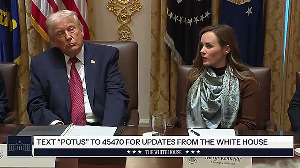The prospects of Microsoft's operating system, Vista, appear fuzzy as customers head into the Christmas season on the back of a slowing global economy.
For one, the software giant is already talking of its seventh release - Windows 7 (public beta expected in early 2009) - hardly two years after the public launch of Vista in January 2007.
Vista was released more than five years after the introduction of XP - the longest time span between successive releases of Windows. Second, Microsoft's client revenue - most of it which comes from sales of Vista - grew a mere 2 per cent to $4.22 billion in the first quarter of financial year 2009.
This is cause for worry, given that it is the core of the company's business. Besides, it was the second recent quarter (out of three) that saw Vista sales grow sluggishly or shrink.
Vista's weak growth was in spite of the 10-12 per cent growth in shipments of personal computers (PCs). The sluggishness was attributed to flat PC sales in developed countries and zooming sales of low-cost PCs like netbooks.
Customers in developing countries are more likely to buy PCs with cheaper, basic versions of Vista installed. If they buy netbooks, they are likely to get Windows XP Home or Linux, which implies little or no revenue to the software maker. Microsoft, though, hopes Vista can rebound in the second quarter with 7-10 per cent growth during the traditionally strong holiday season.
It claims to have sold over 180 million licences of Windows Vista worldwide, with India adoption alone crossing over 2 million copies since the consumer launch in January 2007.
The biggest hurdle to Vista's adoption is that it's a memory-hogging operating system (OS). While Microsoft says it requires 500MB of memory to run a machine, user experience pegs it at closer to 1GB for it to work smoothly. Netbooks and other low-cost PCs cannot afford an OS that devours memory. It raises costs. Moreover, if you do not have a graphic card, features like 'Arrow' do not work well. So, a customer has to spend more on the RAM (memory) and buy an extra graphic card, which adds to the cost.
Microsoft, meanwhile, has stopped production of Windows XP, which was another obstacle in Vista's path as it was competing for sales. Despite this, reports abound of companies downgrading to XP from Vista. Microsoft, on its part, believes people are biased against Vista. So in July 2008 it introduced a web-based advertising campaign christened the "Mojave Experiment".
Participants are first asked about their experience with Vista, and then asked to rate it on a scale of 1 to 10. They are then shown a demo of some of the new operating system's features (called Mojave), and asked their opinion and satisfaction with it on the same 1 to 10 scale.
After respondents rate "Mojave", they are then told, that they were, in fact, shown a demo of Windows Vista. Microsoft claims that Mojave, unfailingly, receives a higher rating. Perception, however, can be bigger than reality at times. Vista, hence, is vacillating between Microsoft's claims of widespread customer satisfaction, conflicting research reports of success and failure, and dissenting voices from industry observers who have written-off Vista.
Microsoft is now busy with Windows 7, which includes features like advancements in touch, speech, and handwriting recognition, support for virtual hard disks, improved performance on multi-core processors, improved boot performance, and kernel improvements.
The software giant will have to ensure that Windows 7 does not run afoul of regulators. Finally, it will also have to ensure that a pared-down version of Windows 7 is available for low-cost PCs.





